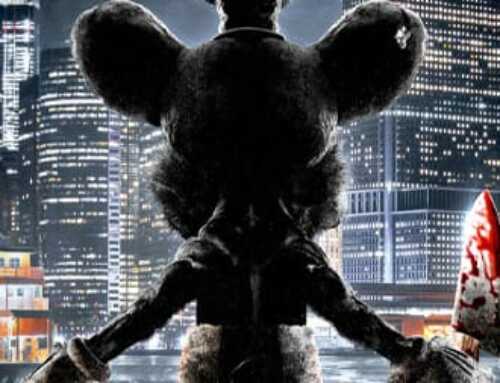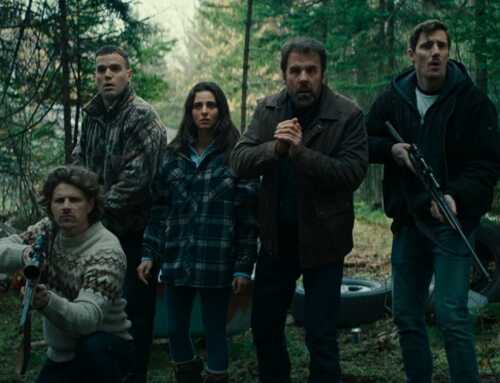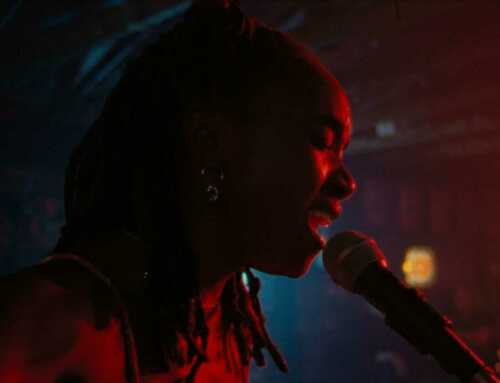The new eerie horror film The Accursed, embodies the feel of the classic slow-burn 1960s horror, setting its creepy tale deep in the American South.
Directed by Kevin Lewis, who also directed the 2021 Nicolas Cage horror-comedy Willy’s Wonderland, again collaborated with Willy’s Wonderland composer Émoi to bring an unnerving, yet intense feel to The Accursed. This haunting score creates an environment that leads audiences to experience what sounds and feels like the opening of hell.
Though best known for his score on Willy’s Wonderland, Émoi also voiced the film’s leading villain Willy the Weasel. His diverse musical talents include being a multi-instrumentalist, film composer, multi-media composer, and music producer.
Émoi shares with us his musical approaches to The Accursed score, his favorite horror film scores, and the importance of strategically placed silence.
Bonilla: How did you become involved with The Accursed?
Émoi: Kevin called me insisting, “Dude, I’ve got this script! Just read the first eight pages, and then call me back.” After he sent me the script, I read the first eight pages, and thought, “It was just so awesome!” The way it was written was awesome. I called Kevin back and he said, “Okay, let’s read the rest of it now and we’ll talk afterward.” We did that. He and I read the whole script that afternoon. When we talked on the phone afterward, I insisted, “We got to do this. Let’s do it. This is awesome!”
Were you looking to create a film score different from Willy’s Wonderland?
Both of us had a desire after Willy’s Wonderland to do something that was a little bit more serious. Willy’s Wonderland was a fun film, with a little bit of a gimmick. And there’s nothing wrong with that.
Afterward, people would say, “You did a great job on Willy’s Wonderland. The soundtrack did really well. You got an RSD vinyl release, but those songs were kid sing-along songs. Can you really score a movie?”
There’s actually a lot of scoring in Willy’s Wonderland. It, unfortunately, didn’t take the limelight. What took the limelight were the kid songs, and the 1980s title track Willy’s Wonderland, aka “The Pinball Song”.
We were very excited about The Accursed because it was a heavy drama with a real subject matter. It’s also a slow burn, where the small moments matter. Willy’s Wonderland is all about big moments. Before that movie can slow down, there’s a cut, and it just ramps up again. The Accursed is a different kind of experience.
When developing the score, what direction did you and Kevin want to go in?
We did not have a template. When you score a movie or a commercial, the editor will take music from something else, and put it over the cut to sell it through. They’ll try different things until the director, and/or producers find something they feel works. With The Accursed, we abandoned all reference music. There’s not one single reference track, not one temp track. Just a pure score inspired solely by the film itself.
What was your initial process in developing the score?
I wrote the main title theme before anything else. Initially, I thought, “I don’t know if this is too much, but let’s try it.” I also wrote, “You Are My Baby Girl” as a song between the mother and daughter was a part of the script. The lyrics ended up becoming part of the dialogue in the film.
For the score, I bought a lot of really unique instruments, from all over the place, including weird stuff that doesn’t even have a name.
I would record ideas and send them to Kevin. We both loved the process and would get a lot of inspiration that way. This was a year process. Eight months or so before I even started scoring the movie, we were in constant communication. Kevin sent me photos and rough edits from the set. Everything you can imagine. We started organically creating the music for the movie from there.
How did you develop the two original songs for the film?
We started with that song in the script between Elly and her mother. Kevin and I, in one of our initial conversations, discussed, “It’s the mother song to the daughter. So maybe, it makes sense that it could be the mother’s song to her mother as well.” The mom might take the song that was important to her from childhood and bring it to her own daughter.
We had to get into the psyche of sick people. A lot of times these types of narcissistic mothers would kill themselves to get their daughter’s attention, to entrap their daughter.
What would you say was the biggest challenge in scoring and doing the sound design for this film?
Paul NJ Ottosson did the sound design for the film. He also worked on Willy’s Wonderland and is a three-time Academy Award-winning sound designer. I did a lot of the musical sound design. So much of the sound design, or what people would interpret as the sound design was actually music. It was actually these weird drones and spaced-out weird sounds that I found, or created.
I wouldn’t say there was a big obstacle. It was just dialing the music in and getting it layered properly, especially in surround sound. Leaving room for Paul to do his thing.
I layered so much stuff that I got carried away a lot. I would throw things through the center speaker, through the left, and then through the back right. If you don’t watch this movie on surround sound, you’re not fully experiencing this movie. I like to describe it as sound paint. It’s like painting a picture with sound because it’s atonal, not thematic material.
I guess the biggest challenge would be finding the right space between all the frequencies, so it’s not muddled.
Throughout the film, there are a lot of low vibrating noises. How important was it for you to have that in the film?
One of the film’s producers Scott Harbert, who was also a producer on Willy’s Wonderland is a musician. Fun fact, he scored Kevin’s first film out of college. He’s also more of a tech geek than I am. Scott’s really into all kinds of toys, gadgets, and sub-frequencies arrangements.
In the beginning, one of Scott’s contributions was suggesting using sub-frequency sounds in the score with lots of rumbles. He was reading something about how sub-frequencies can actually make us feel unnerved, no matter what’s going on, on a subconscious level. We really wanted to tie in that effect. There’s a lot of that stuff tucked in there. Computer speakers and headphones can’t pick up a lot of the stuff that’s actually there. You need to watch this film in surround sound, on a good system.
Kevin really loved the frequency approach. He felt that it was the demon world. What he wanted was when the demon was present in any way, you’ll notice the shaky camera and a low-frequency pulse. It was the way of like experiencing hell, through the demon’s presence.
In the film, there are prominent moments of silence. How important is it to include that in horror films in general?
I love silence. It’s not because I’m lazy. It’s because it gives space to make the next piece more impactful. I don’t think we have to spell everything out for the audience all the time.
I feel like things are often over-scored. I’ll give you an example from Willy’s Wonderland. There’s a scene where the Janitor (Nicolas Cage) is alone for the first time in Willy’s Wonderland cleaning. They originally had put a temporary track there. It was like a really fun, upbeat temp track meant to be funny, as he’s cleaning. I was asked, “What do you think you’re going to do there?” I recommended, “Honestly, I would take all the music out there. I wouldn’t do anything there.”
When asked why, I explained, “Think about this for a second. Everything has been funny up until this point. This is the first time he’s in there alone. It’s dark and the animatronics are watching him. This is our time for the audience to feel what he’s feeling, the solitude and eeriness.”
What was the most challenging scene for you to score?
I would say, the most challenging and favorite scene is when Mena Suvari’s character picks up the book and does the incantation. The reason it was difficult, is because it had to be paced just right. It can’t be too fast or too slow. But it lets you know something is coming.
I had to change time signatures a few times in the track, to make it fit with all the moments in there. While also not messing with the tempo. That one part had to sound consistent, even though it was going between time signatures. It was quite challenging. I thought it was really impactful scene and one of my favorite parts of the movie.
With the Halloween season upon us, what are some of your favorite horror film scores?
That is a tough one. Instantly, Jaws comes to mind. John Williams is my favorite composer of all time. Undoubtedly, Jaws was next level. He used sub-frequency. I don’t even know how you score water like that and make it so unbelievably impactful.
Halloween is iconic. Everybody loves the theme for Halloween. The Return of the Living Dead is one of my favorite movies of all time. The score infused a lot of rock into it. A lot of people don’t know that it was co-scored by Matt Clifford, the keyboardist for the Rolling Stones. The soundtrack was amazing and impactful. Hellraiser is a great soundtrack. Christopher Young is an amazing composer and one of the most prolific horror composers. Drag Me to Hell is my favorite score of his.
One Comment
Comments are closed.








[…] Justina Bonilla Source link […]